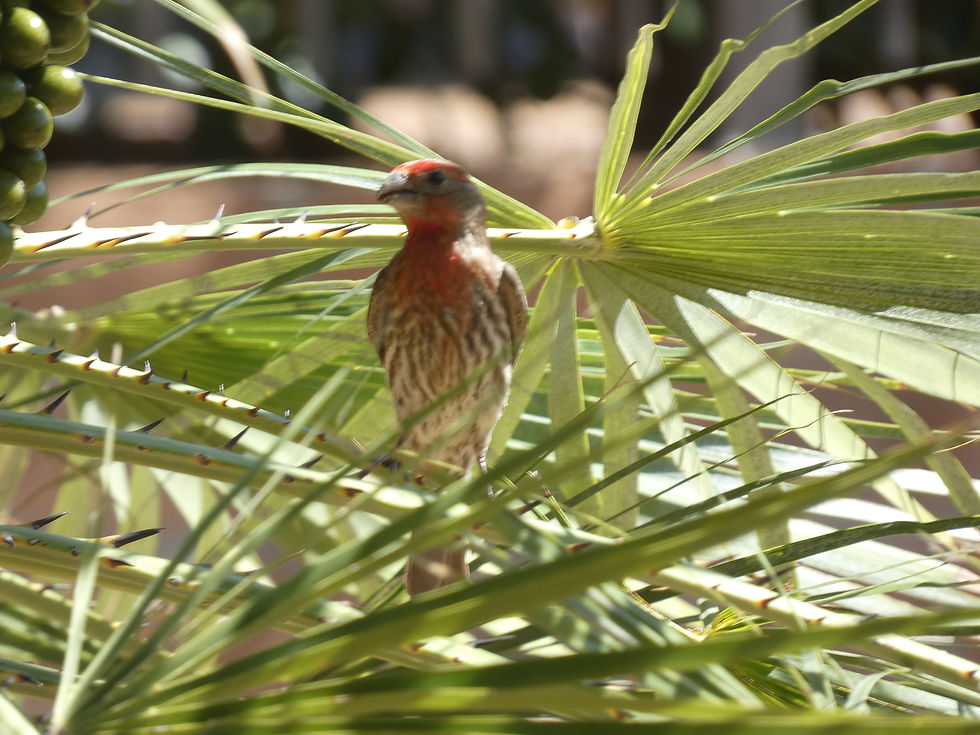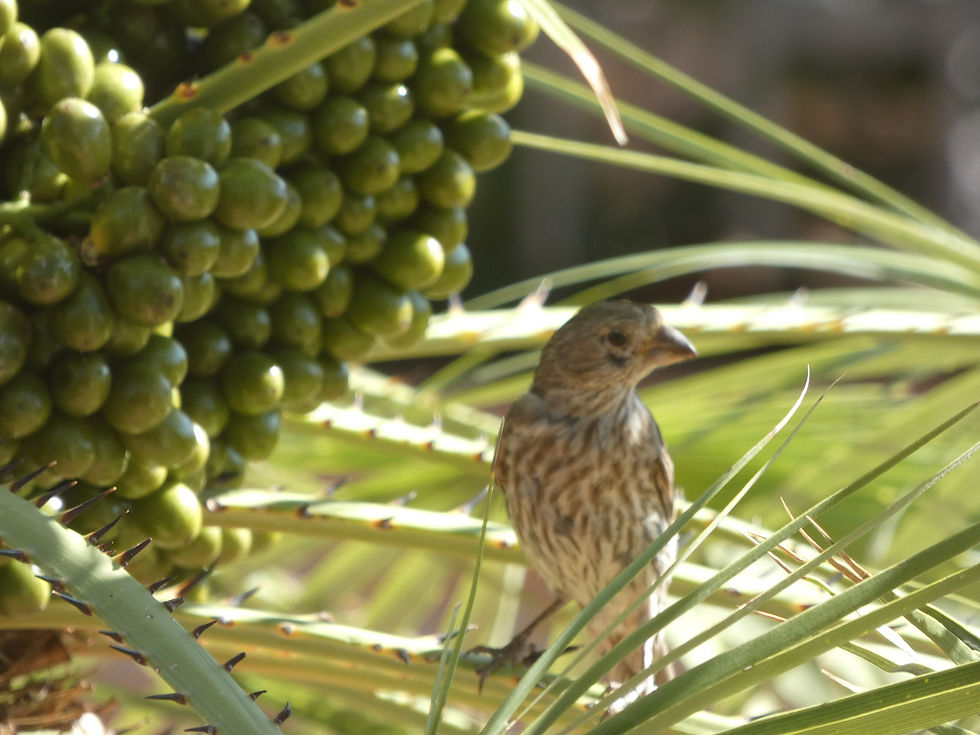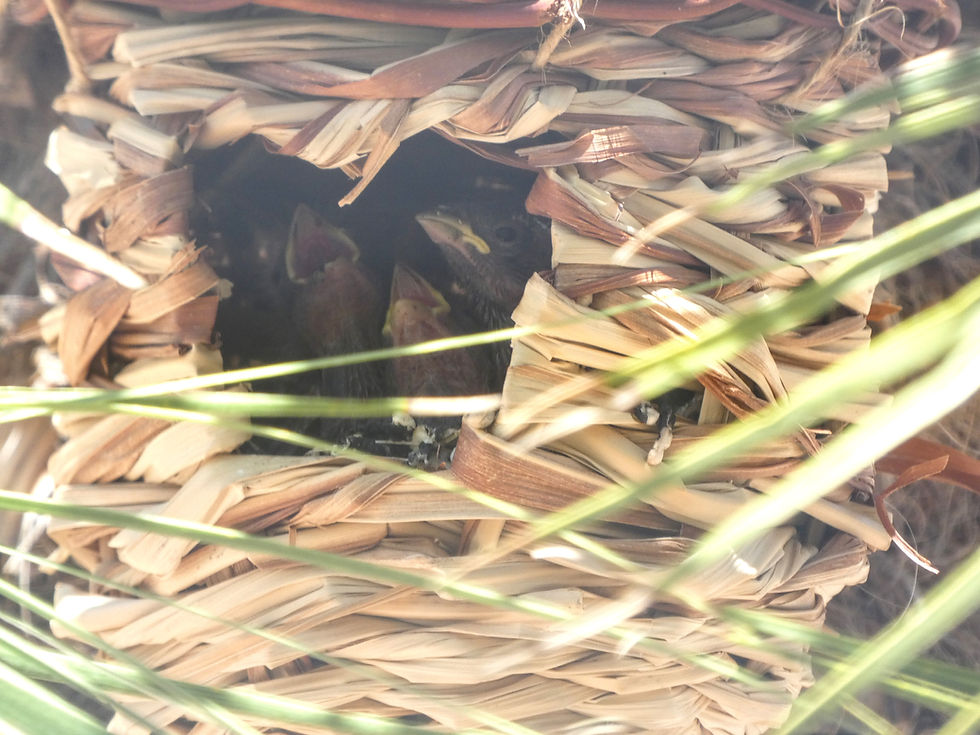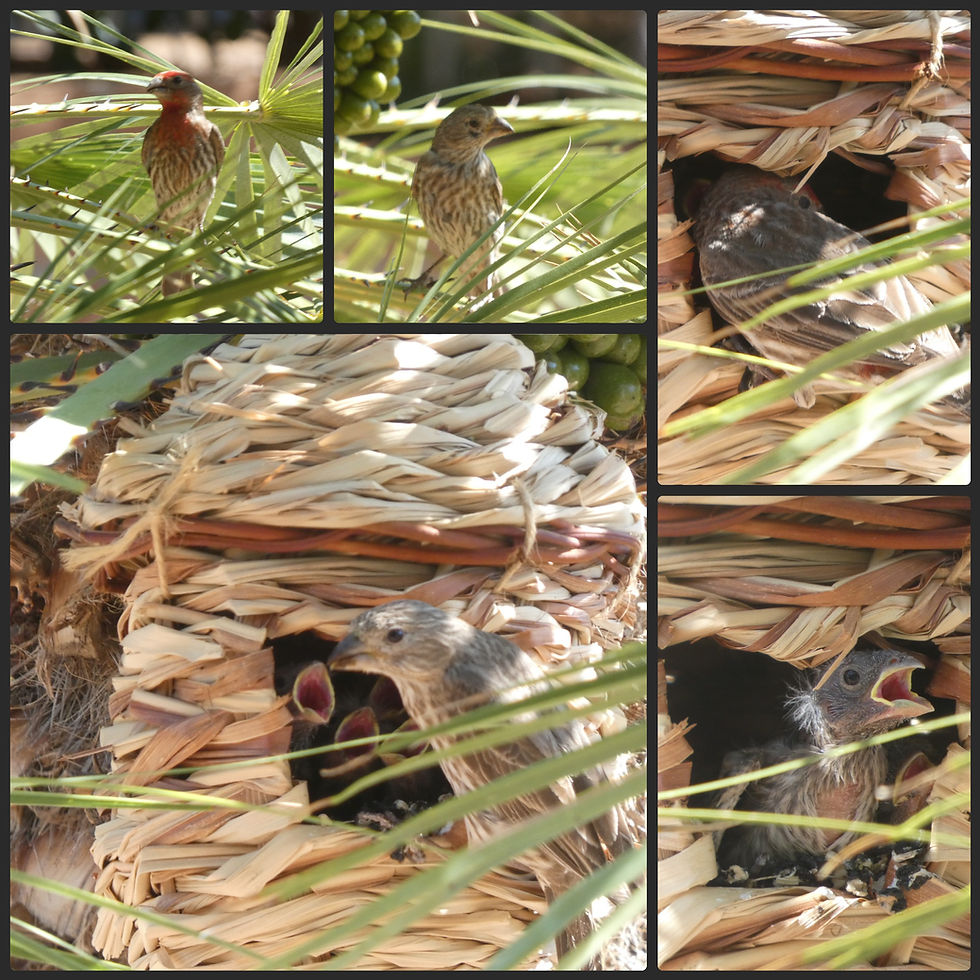House Finch Family
- Sheryl Linn
- Jun 9
- 2 min read
Updated: Jun 15
Roger and I were excited to look out our dining room window this past May to see a little house finch couple building a nest in the hand-woven grass birdhouse we hung in our palm tree.
After a couple of weeks, we saw the couple bringing back "food" for the babies. Below are some photos Roger and I have taken from inside our house so as not to disturb the nest.



House finch parents provide extensive care for their young while in the nest. Both parents take turns brooding the hatchlings constantly for the first week, giving warmth. The female broods them at night. As the chicks grow feathers, they require less constant heat.
Parents gather food and feed the chicks frequently, up to every 2-3 minutes at peak demand. Nestlings are fed insects, spiders, and seed mixes, getting a higher protein diet than adults.
House finch nestlings hatch with an egg tooth that they use to break out of the egg. For their first week, parents feed them pre-digested insect slurry and regurgitated seeds.
Below are photos of Mrs. and Mr. House Finch feeding the ever-hungry chicks:
While one parent is away gathering food, the other remains vigilant, watching for potential threats. Parents may employ distraction displays, injury feigning, or dive-bombing to deter predators.
Our little house finch family is growing! The chick's feathers are beginning to come in, and we can see them trying to "flap" their little wings inside the nest.
House finch chicks remain dependent on parents for survival even after leaving the nest at 12-18 days old.
Parents continue to care for fledglings by feeding them, tapering off as they learn to self-feed. The parents vigilantly defend against predators and lead fledglings to good foraging spots, and gather the fledglings back to roost together at night.
Within 2-3 weeks after fledging, the young reach independence. Juveniles resemble females with brown plumage, lacking male red coloration. Survival rates triple after chicks successfully fledge the nest.
For more interesting facts about the house finch, visit "How long do house finches stay in the nest after hatching?" - Birdful

Reference: https://www.birdful.org/














